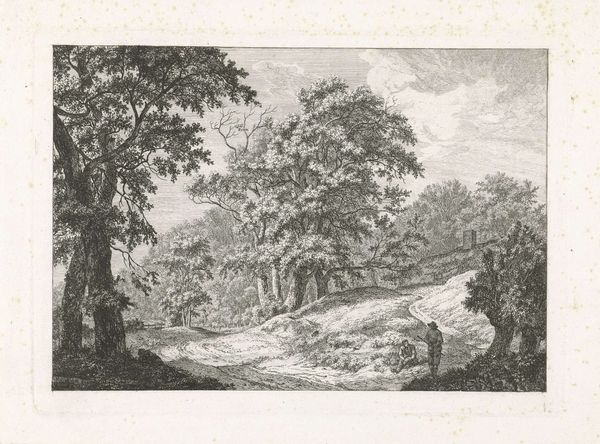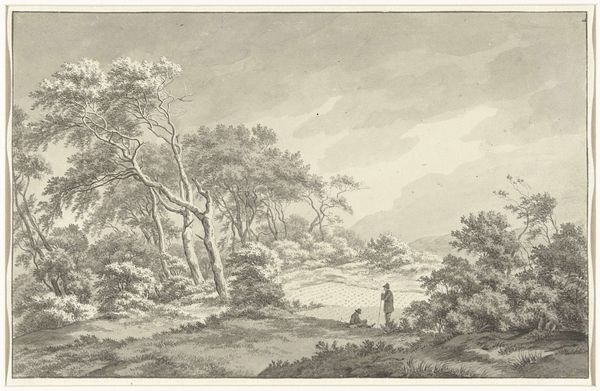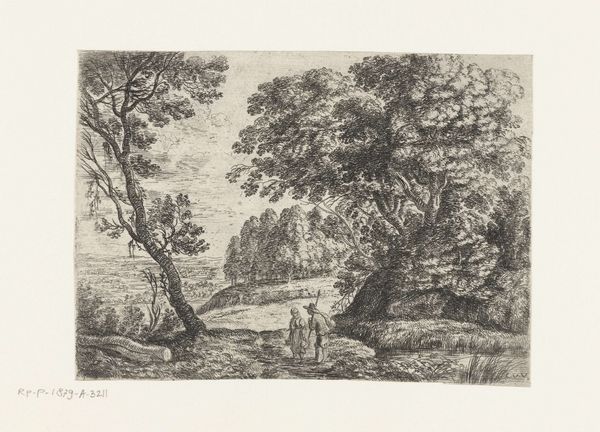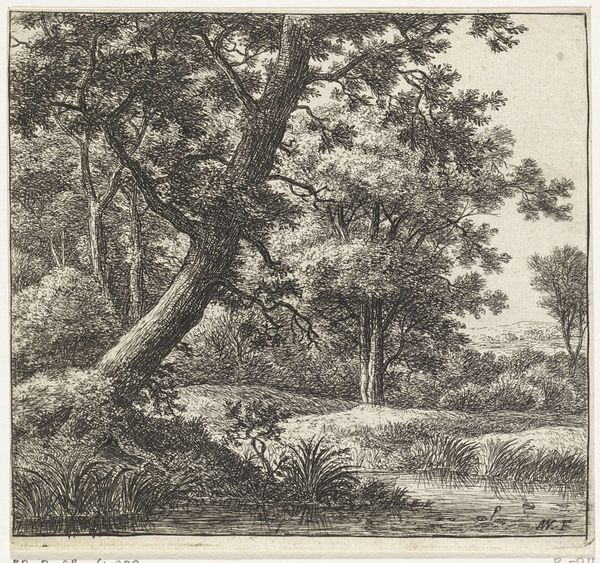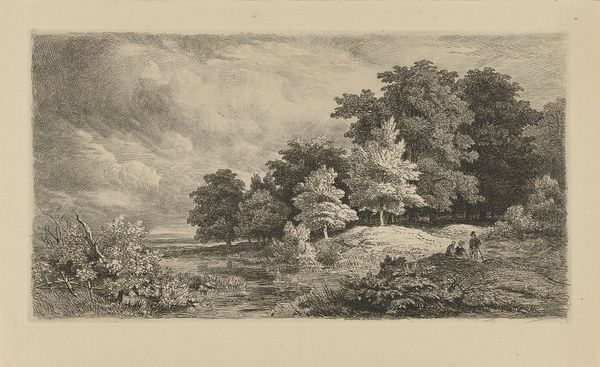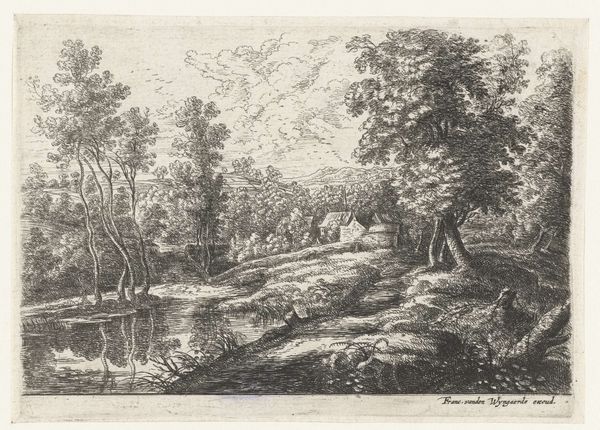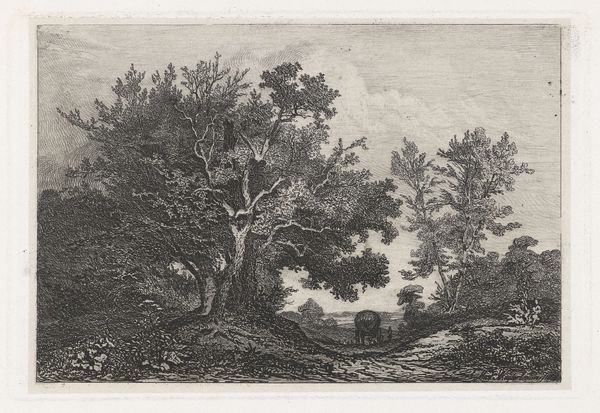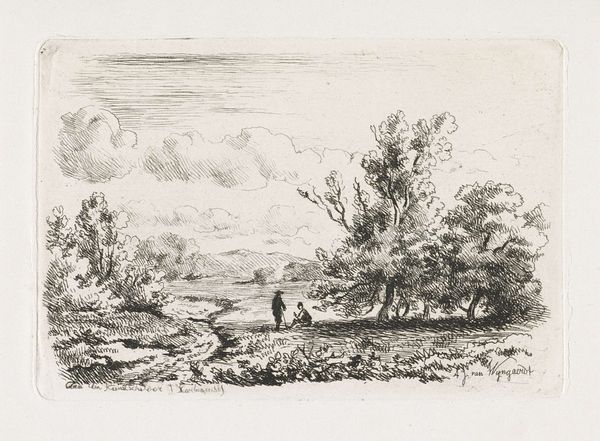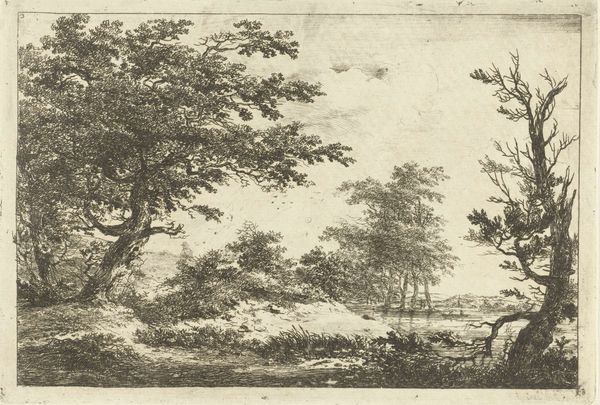
etching
#
etching
#
landscape
#
line
#
realism
Dimensions: height 130 mm, width 172 mm
Copyright: Rijks Museum: Open Domain
Hermanus van Brussel made this print, titled 'Weg naar dorp met rustende man' - or 'Road to a village with a resting man' - using etching, a printmaking technique, sometime around the late 18th, early 19th century. This image speaks to the cultural values placed on rural life in the Netherlands during that period. As cities grew, the countryside became idealized as a place of simplicity and peace, away from the perceived corruption of urban life. The lone figure resting by the roadside embodies this longing for a more tranquil existence. Van Brussel was active during a time of political and economic upheaval in the Netherlands. His choice to depict a serene landscape can be interpreted as a form of social commentary. The print can be considered conservative in that it evokes a sense of nostalgia for a simpler, pre-industrial past. Understanding this artwork requires historical research into Dutch society, the art market, and the institutions of art during the late 1700s and early 1800s. Only then can we fully appreciate its meaning and significance.
Comments
No comments
Be the first to comment and join the conversation on the ultimate creative platform.
